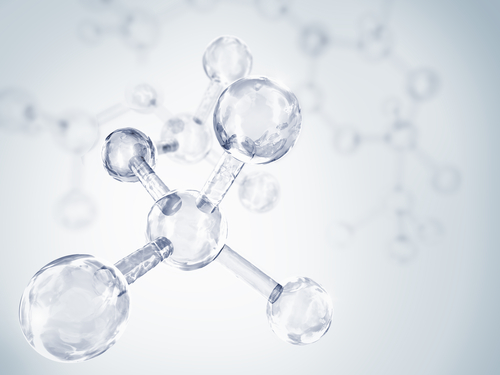 |
Almost all of Earth’s atmosphere—more than 99.5 percent—is composed of three gases: nitrogen, oxygen, and argon, all of which are required for life, and none of which contribute to climate change because they do not absorb radiation.
The remaining 0.43 percent of our atmosphere is composed of “trace gases,” with 0.39 percent water vapor, .039 percent carbon dioxide (CO2), .00018 percent methane (CH4), .000032 percent nitrous oxide (N2O), and last but not least, .00000000067 percent sulfur hexafluoride (SF6). These trace gases all absorb infrared radiation, and together comprise the primary GHGs responsible for changing our climate and warming the planet. (See Table 1 for descriptions.)
So, how can such comparatively tiny amounts of just a few gases be the cause of such potentially catastrophic climate change? It’s a surprising, simple process, though one that is often misunderstood.
Need an answer fast? Relax. Our editors guarantee a personalized response to your questions within 3 business days. Take a free trial of Enviro.BLR.com® and see what everyone is talking about. For a limited time, also receive a free 2014 EHS Salary Guide. Download Now.
As the sun emits shortwave radiation (aka sunlight) into the Earth’s atmosphere, about 30 percent is reflected back into space by clouds and the Earth’s surface; about 20 percent, in the form of ultraviolet radiation, is absorbed by the atmosphere, and the remaining approximately 50 percent is absorbed by the Earth’s surface.
Once absorbed by the Earth, this solar energy is then reemitted from the surface but in a weaker form with longer wavelengths in the infrared range. While some of this radiation moves through the atmosphere back into space, the majority is absorbed in the atmosphere by GHGs, which in turn reemit it in all directions—into space, into other GHG molecules, and back again to the surface of the Earth. As the amounts of GHGs emitted into the atmosphere from man-made sources have increased since the industrial revolution, more infrared radiation is absorbed and less is allowed to escape back into space, and as a result, we are experiencing amplified warming on the surface of the Earth.
To quantify the heating effect of GHGs, scientists combine the amount of a GHG in the atmosphere, the length of time it remains in the atmosphere, and the GHG’s ability to absorb infrared radiation. Together, these three factors are called “radiative forcing” or “climate forcing” and are used to calculate the Annual Greenhouse Index. In 2013, the Annual Greenhouse Gas Index was 1.34, representing a 34 percent increase in radiative forcing since 1990 (which has a set value of 1.0). Of all the GHGs, CO2 continues to rank highest in volume man-made GHG, and CO2 alone accounts for a 27percent increase in radiative forcing since 1990.
Everything You Need for Environmental Compliance
Enviro.BLR.com puts everything you need at your fingertips, including practical RCRA, CAA, CWA, hazardous waste regulatory analysis and activity, news, and compliance tools. Try it at no cost or risk and get a FREE report.
Another measurement is that of Global Warming Potential (GWP), which combines only how well a GHG absorbs radiation and its atmospheric lifetime. GWP uses CO2 as a baseline for other GHGs and is a measure of the total energy a GHG absorbs over a set period of time, normally 100 years, compared to CO2. Thus, giving CO2 a GWP of 1, CH4 has a GWP more than 20 times greater than CO2 and N20 has a GWP more than 300 times that of CO2.
Tomorrow, we will take a look at how GHGs are impacting climate change now based on research by the Environmental Protection Agency (EPA).
Table 1
| GHG |
Characteristics |
Natural Sources |
Man-made Sources |
|
Carbon dioxide (CO2) |
Colorless and odorless |
Plants, animals, soils, and seawater during respiration |
Fossil fuel combustion and other fuel combustion such as wood |
|
Methane (CH4) |
Colorless, odorless, and nontoxic |
Natural gas, wetlands, swamps, marshes, termites, and oceans |
Fossil fuel mining and natural gas transportation, cattle, rice paddies, and landfills |
|
Nitrous oxide (N2O) |
Colorless, nonflammable with a “sweetish” odor |
Oceans and rainforests |
Fertilizers, nylon and nitric acid production, cars with catalytic converters, and burning organic matter |
|
Sulfur hexafluoride (SF6) |
Very potent and persistent with a 1,000- year atmospheric lifetime |
None |
Primarily used in the electric power industry and also in the magnesium casting industry |
